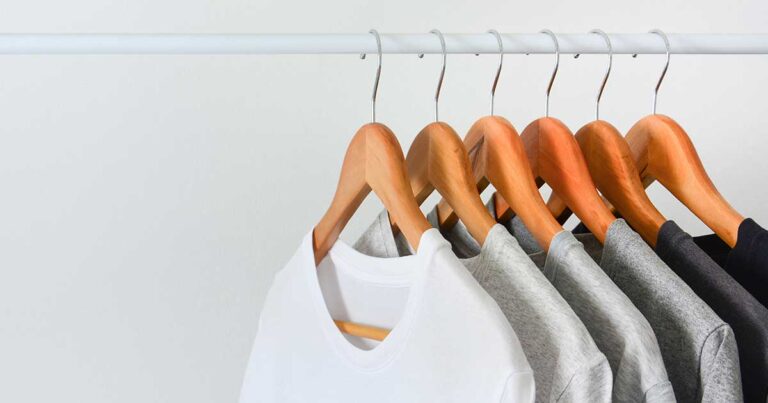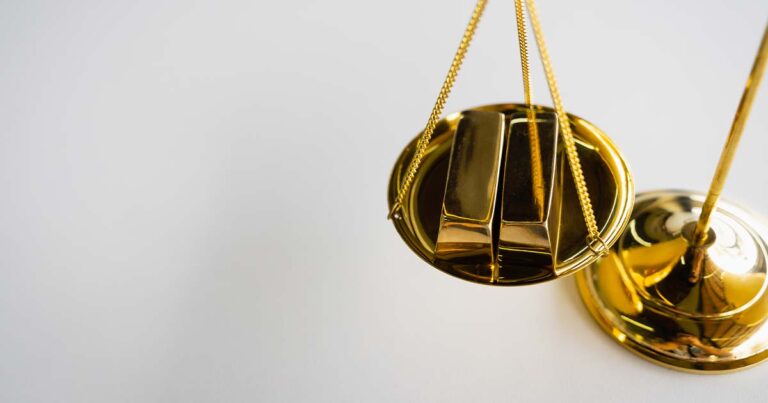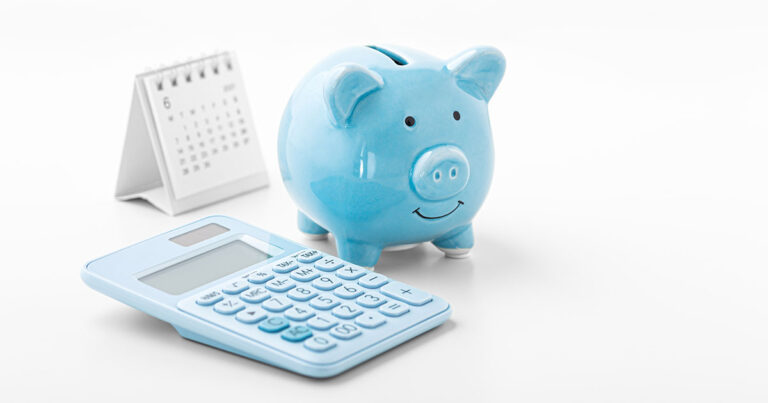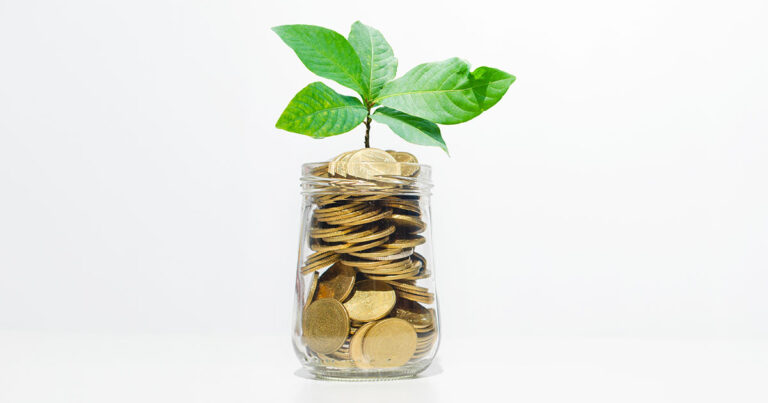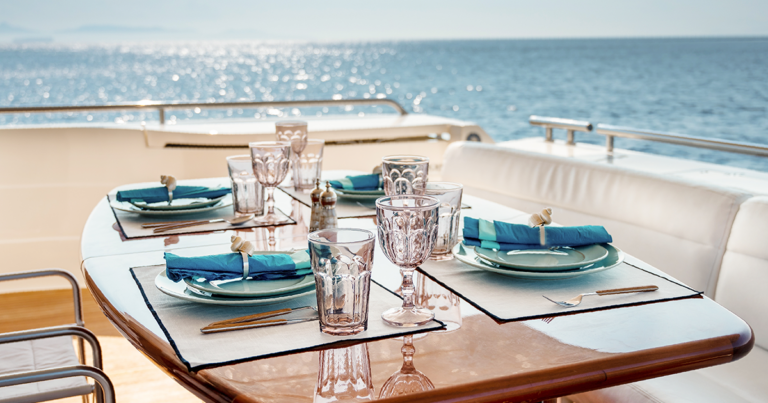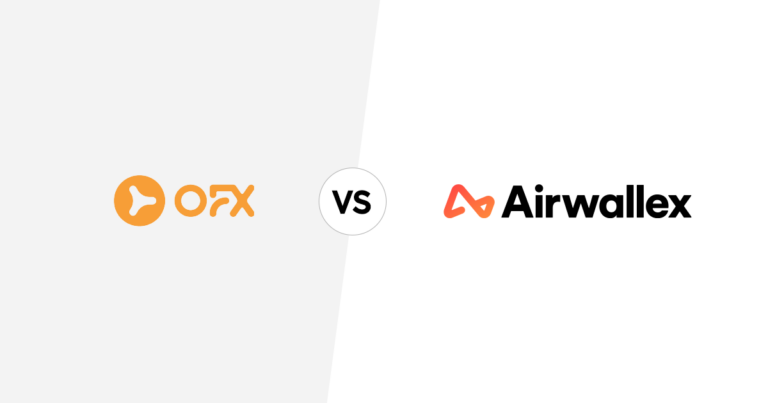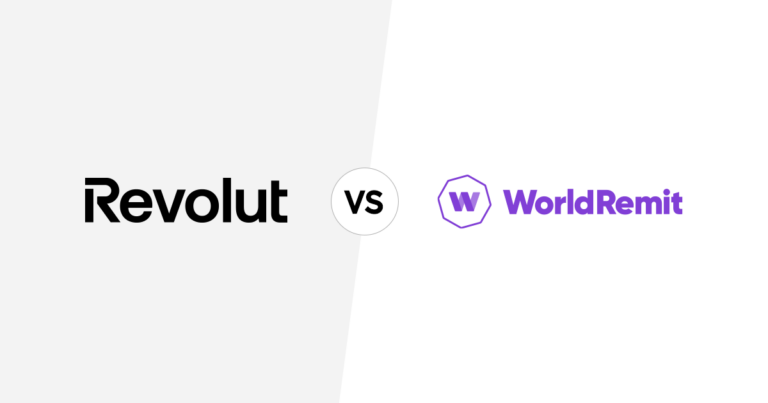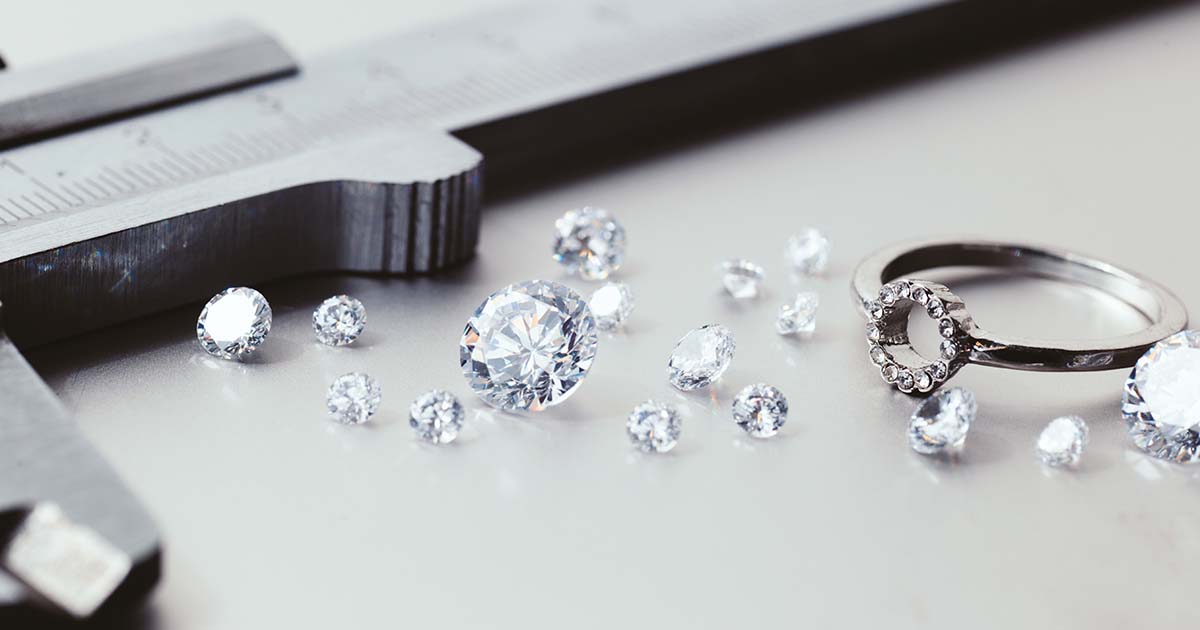
This article covers:
- How are diamonds formed?
- How much are diamonds worth?
- Are diamonds rare?
- Why are diamonds so expensive when they are not rare?
- But why does diamond lose value?
- Diamonds are still valuable
- What about lab diamonds?
- At the end of the day, diamonds have long been considered a symbol of luxury and status…
- Before you go…
When it comes to proposals, there’s a lot of pressure on the guy to get it right. We’re talking romantic dinners, love letters, and, of course, the ultimate gift: diamonds.
But have you ever stopped to think about why diamonds are so darn expensive? Moreover, why have they become the quintessential choice when it comes to popping the question?
In this blog, we’re delving into the world of diamonds, and we’ll be exploring everything from their price tag to their sparkling lab-made cousins. So, buckle up, folks, and get ready to learn all about the sparkly rocks that are at the centre of every proposal.
How are diamonds formed?
You know how we’re all a bit dazzled by the sparkle of diamonds? Well, there’s a pretty cool story behind that sparkle. Diamonds aren’t just lying around on the Earth’s surface, they’re actually created deep down under – about 100 miles beneath our feet! It’s incredibly hot and squished down there, which is exactly what diamonds need to grow. But these gems don’t just teleport themselves to the surface. They have a fascinating journey that’s less about magic, and more about the amazing forces of nature.
A long time ago, there was a massive volcanic eruption which brought the diamonds to the surface Earth.. We haven’t had an eruption like that in a very long time.
How much are diamonds worth?
Guess what, folks? As of November 23, 2023, a single gram of gold is going for around 64.1 USD. Now, get this: a carat of diamond is double the weight of gold, weighing at 2 grams. And as for the price?
Well, hold onto your hats because a carat of diamond is currently valued at approximately 5,082 USD! In contrast, those 2 grams of gold come with a price tag of approximately 128.20 USD. Talk about a big difference! It looks like diamonds are definitely giving gold a run for its money.
Are diamonds rare?
Why are diamonds so expensive? Is it because they are rare?
Well, actually, we’re here to bust that myth. It turns out that diamonds are more common than other precious gemstones like emeralds, rubies, and tanzanite. Can you believe it? Even pure gold in its natural form is rarer than diamonds. It just goes to show that sometimes things can surprise us!
Why are diamonds so expensive when they are not rare?
Alright, let’s dive into this! You’re probably wondering, if diamonds aren’t rare, then why are they so expensive?
Because their pricing is never really about rarity like gold. Well, it all comes down to the good ol’ rule of supply and demand. See, when there’s high demand for something but limited supply, prices naturally skyrocket. And that’s exactly what happens with diamonds.
Even though nature might not have made diamonds super rare, humans have found ways to make them more scarce. How, you ask? Well, through some clever efforts.
Control supply
Let us break it down for you. Until recently, the De Beers Diamond Trading Company had a tight grip on the diamond industry. They snagged up a whopping 80-90% of all the diamonds unearthed each year. But here’s the kicker: instead of immediately flooding the market with these sparkly gems, they decided to stash them away.
You see, by controlling the supply and only releasing a limited number of diamonds to the open market, De Beers effectively created scarcity. And you know what happens when something is scarce, right? The price shoots up! So, the high price of diamonds can largely be attributed to this strategy.
Now, it’s worth noting that De Beers doesn’t have quite as much control as they used to. But guess what? Diamonds still carry a hefty price tag. Why? Well, because that’s just how it’s always been. Diamonds have a long-standing reputation for being expensive, so it’s kind of what we’ve come to expect.
Think about it, if diamonds suddenly became cheap, it would be quite a shocker, wouldn’t it? So, even though the dynamics have shifted a bit, the high cost of diamonds remains a defining characteristic.
Good marketing
Have you ever heard about mate selection theory? It’s a really fascinating concept! When it comes to human relationships, there are two important factors to consider: direct benefits and indirect benefits.
Direct benefits are all about providing resources and support for the family, like being a reliable partner and investing in raising children. Indirect benefits, on the other hand, involve qualities that could enhance the genetic fitness of future offspring, such as high fertility or desirable genetic traits.
Now, here’s the interesting part on how it ties back to diamonds.
In the past, they used to tell women that if a man wanted to marry them, he had to prove his genuine intentions. And how did they do that? By making a significant financial commitment upfront. It was a way for men to demonstrate that they were in for the long haul. Diamonds, with their high price tags, have become a symbol of a man’s ability to provide those direct benefits to a woman and marketing has played a role in emphasising and exaggerating this concept.
However, over time, the true origins of this tradition have faded away. Nowadays, people simply see it as something one is supposed to do when getting engaged, without really knowing the original purpose behind it.
It’s quite fascinating how customs evolve and lose their initial meaning, don’t you think?
Expensive to produce
You won’t believe the journey a diamond goes through before it ends up sparkling in front of you at a retail store. It’s quite a process!
First off, diamonds aren’t easy to mine. They may get a little help from nature, pushing them to the surface, but it still takes a lot of effort to extract them from the earth. Once they’re out, they must be carefully examined and separated. Did you know that only about 5% of all mined diamonds are considered “gemstone” quality? The other 95% may not be as pretty, but they still have their uses in industrial applications.
Now let’s focus on that 5% of quality diamonds. Here’s the thing, they don’t look like the dazzling gems you see in jewellery just yet. They’re more like white rocks. So, the next step is to cut them down into smaller stones or give them a specific shape. This requires a team of experts who carefully analyse the rough diamond and determine the best cut and size. They examine the stone from various angles, using different equipment to identify any imperfections. This helps them ensure that when it’s cut, they end up with the most beautiful stone possible.
Cutting the diamonds is a meticulous process that can take several hours per stone. And let me tell you, the smaller the diamond, the harder it gets. In fact, even the tiniest diamonds on a piece of jewellery can have 58 or more facets to enhance their sparkle by refracting light.
But wait, we’re not done yet! After the cutting is complete, some diamonds undergo additional treatments. These treatments can include eliminating certain types of imperfections, or enhancing or concealing colour and other characteristics.
Once the diamonds are ready, they need to go through a certification process for quality assurance. They are sent to another lab where highly trained experts meticulously examine and document every aspect of the diamond. This detailed report helps provide an appraisal-like document for consumers. Keep in mind, this certification process itself can cost several hundred dollars.
So, you see, the production of diamonds is far from a quick or easy process. It takes several processes, skilled experts, and careful craftsmanship to turn a stone into a gem. No wonder they come with a price tag!
But why does diamond lose value?
You know, it’s interesting to think about why diamonds seem to lose value after you’ve bought them, despite all the intense work and man hours that go into their production. It can be a bit puzzling, right? It might make you wonder, since diamonds are precious gems, and just like gold, shouldn’t their value remain the same?
Well, when you bring a diamond to sell at a jewellery store, the buyer essentially strips away all the markups (the man hours that go into enhancing the gem) that you initially paid for your finished piece.
The truth is, the value of diamonds doesn’t fluctuate wildly like some other commodities. There is actually a standardised pricing model called Rappaport (Rap) pricing that is regularly updated. This pricing is typically tied to the grade of the diamond.
Grading is done by specialised companies, with the industry standard being the Gemological Institute of America (GIA). If you’re in the business of trading diamonds, you eventually develop the means and experience to determine the pricing and value of a diamond using the Rap pricing and GIA grading as baseline.
So, for many retailers, it makes more sense from a business standpoint to shop through wholesale channels. This way, they can acquire newly manufactured goods at wholesale rates, with the wholesaler taking on the product and craftsmanship liability. This way retailers don’t have to pay dealer rates for individual diamonds because they can access wholesale rates through platforms like RapNet. This allows them to make safer, less costly, and more secure business decisions.
So, when people say that diamonds don’t hold their value, it often comes from those who bought them at retail prices and then tried to sell them back to dealers or pawn shops. In this situation, the sellers are typically looking to offload their diamonds as a distressed asset, hoping to get a decent bargain in return.
And let’s face it, dealers and pawn shops are in the business of making smart investments, so they’re not going to pay top dollars for those diamonds. It’s a complex process, but understanding these factors gives us some insight into why diamonds may lose value after purchase.
Diamonds are still valuable
Let us give you an example to help you understand.
Imagine you have two shiny rocks. One of them is just a regular rock, but the other one is special because it’s old and has a unique shape that not many other rocks have. Which one do you think would be more valuable?
Well, it’s the same with diamonds. Some diamonds are old and have rare cuts that make them extra special. It’s not just because they’re diamonds in general, but because they have these special qualities that make them even more valuable.
But here’s the thing, most people who buy diamonds don’t really know a lot about them. They might not understand the different qualities that make one diamond more valuable than another. And on top of that, they don’t have access to the actual diamond market where these rare and valuable diamonds are traded.
So, sometimes the end consumer doesn’t fully realise the true value of a diamond because they don’t have all the knowledge or access to the right market. It’s kind of like not knowing that your old rock is actually a rare gem.
So, remember, diamonds do have value, but it’s not just because they’re diamonds. It’s because of their special qualities and rarity. And it’s understandable that the end consumer might not fully grasp that value because they don’t have all the information.
What about lab diamonds?
More and more people are choosing lab-grown diamonds over mined diamonds. Well, it’s because these man-made gems are visually and chemically identical to the ones found in mines. They have the same sparkle, brilliance, and chemical composition as natural diamonds. The only difference is that they cost way less!
Instead of forming deep within the Earth over thousands of years, lab-grown diamonds are made using state-of-the-art technology that mimics the natural diamond-growing process. It’s like nature’s recipe, but with a little human touch.
And here’s the interesting part – these lab-grown diamonds have a goal, and that’s to be perfect! They strive to be just as flawless and beautiful as natural diamonds, but they’re made in a controlled environment.
What is the difference between lab-grown diamond and actual diamond?
When we talk about natural diamonds that come from mines, they have imperfections. It’s just how they naturally form deep within the Earth. But with lab-grown diamonds, scientists can create diamonds without those imperfections. They can make them as close to perfect as possible.
Why are lab created diamonds so expensive?
Now, you might think that since lab-grown diamonds are made in a controlled environment, they would be cheaper than natural diamonds.
According to a report from Business Times in August 2023, a lab-grown diamond of a standard quality was priced at around 1,425 USD per carat, while a natural diamond of similar quality fetched around 5,185 USD per carat. So yes, lab-grown diamonds are indeed cheaper, but they can still be quite expensive overall.
Even though they don’t involve mining, the technology and equipment used to create these diamonds can be quite expensive. So, the cost of production plays a role in determining their price.
Another factor that can drive up the prices of lab-grown diamonds is the demand for ethical and sustainable options. Many people are looking for alternatives to mined diamonds that are more environment-friendly and socially responsible. This growing demand for ethical options can also contribute to the higher prices of lab-grown diamonds.
It’s important to note that while lab-grown diamonds aim to be perfect, the labs producing them are currently focusing on producing larger quantities rather than focusing solely on flawless stones. So, there might still be some imperfections in lab-grown diamonds that aren’t accounted for in grading standards like GIA or IGI.
So, while lab-grown diamonds strive for perfection, there are still factors like production costs and market demandd that influence their prices and the presence of imperfections.
At the end of the day, diamonds have long been considered a symbol of luxury and status…
People are willing to pay exorbitant amounts of money for them, partly because they believe diamonds to be rare and valuable.
However, the truth is that diamond prices are high because of a societal expectation that they should be. It’s a bit like a self-fulfilling prophecy – people are willing to pay high prices, so the prices stay high. But as time goes on and society becomes more equal, it’s possible that this obsession with diamonds will die out.
After all, there are more important things in life than a shiny rock!
Before you go…
Okay, let’s take a break from talking about diamonds and shift our focus to something else that can offer you great value in today’s global economy – sending money overseas.
We all know how stressful it can be when you need to send money to a loved one or a business partner abroad, especially with all the extra fees and hidden charges that often creep up on you.
Luckily, there’s a solution – Instarem. With Instarem, you can now send money abroad to 60+ countries at fantastic rates and transparent fees that won’t break the bank. Say goodbye to nasty surprises, and hello to a more secure and hassle-free way of sending money overseas.
Download the app or sign up here.
*Disclaimer: This article is intended for informational purposes only. All details are accurate at the time of publishing. Instarem has no affiliation or relationship with products or vendors mentioned.



